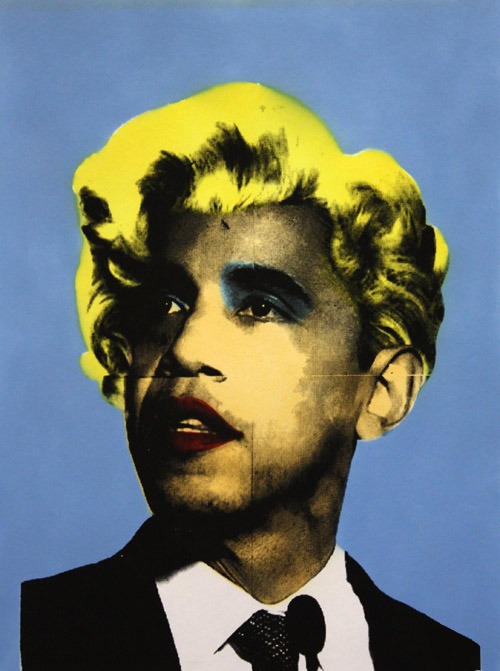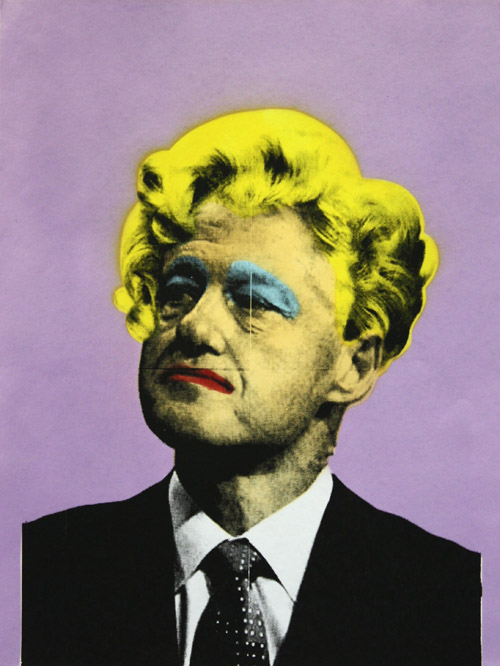“CS Lewis once said “How monotonously alike all the great tyrants and conquerors have been”. This was the primary thought behind the series Monsters and Marilyns. Throughout history Fascists, Communists, Marxists, and Socialists have murdered and oppressed those who were under their rule, yet popular culture and propaganda have tried to make these monsters into heros and icons. Twisting peoples memories and brainwashing them into an Orwellian nightmare.
Andy Warhol’s silkscreen painting of Marilyn Monroe is one of the most iconic painting of the Pop Art Movement. Not many people know that the painting was meant to show the mask of popularity that a celebrity wears. On the outside there were different shades of happiness, but under all the paint and smiles there was something darker: depression, drug use, and suicide. I took this idea and reinterpreted it to speak truth into our popular culture. The hair and make-up from the Marilyn Monroe painting is placed on politicians, dictators, public officials, as well as old horror movie monsters that are liars, murderers, and tyrants. By doing this the statement is made that no matter how much popular culture or the mass media tries to dress up and beautify these people, they are still monsters. Saddam Hussein, Barack Obama, Frankenstein, Dracula, Stalin, Lenin, Che Guevara, Ho Chi Minh, Bill Clinton, Pin Head, Leather Face, Barney Frank, Mao Zedong, the Bride of Frankenstein, Hitler, Hannibal Lecter, Jack (the character from Stanley Kubrick‘s The Shining), and Jesse Jackson are only some of the people that I have Marilynized.
My goal is to force people to look past the media hype and celebrity masks of these people and see them for who they really are. Much like in George Orwell’s masterpiece 1984, people are too willing to give up their freedom and liberty to be taken care of and protected by the Government. They will believe anything that they are told to believe even if they know its a lie because they do not want to know the truth. As a society, we want to be lied to, we want to think that everything is normal even when it is crashing down around us. We want to believe in people even though they give us empty promises and lies every time they open their mouths. We need to wake up and realize that lying to ourselves does not change reality. We must recognize and accept truth. The truth will set you free, but it will not make you sleep easy at night.
Therefore, by linking monsters to the mask-wearing Marilyn Monroe that Andy Warhol portrayed, I demonstrate that things are not what they seem. They are a mask, a lie, a perversion of the truth to allow people to lie to themselves in order to feel secure.”
Jesse Lenz























